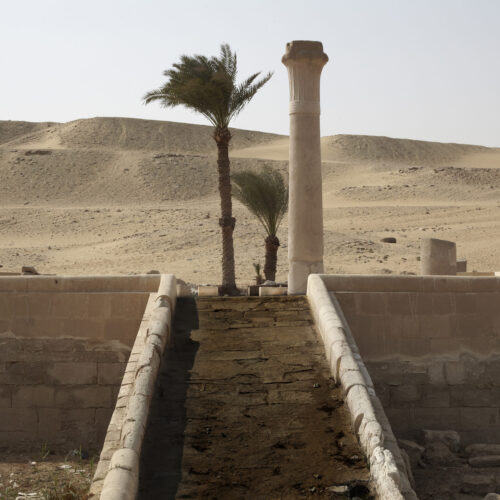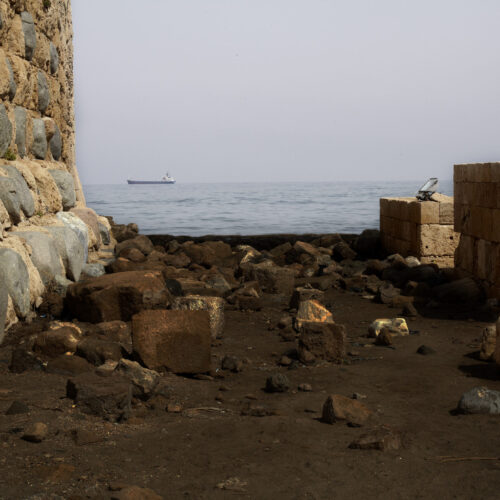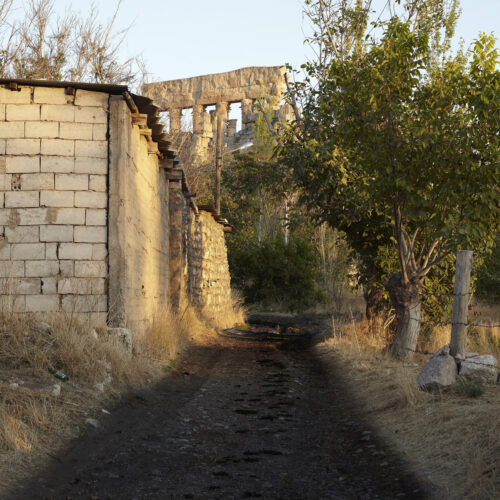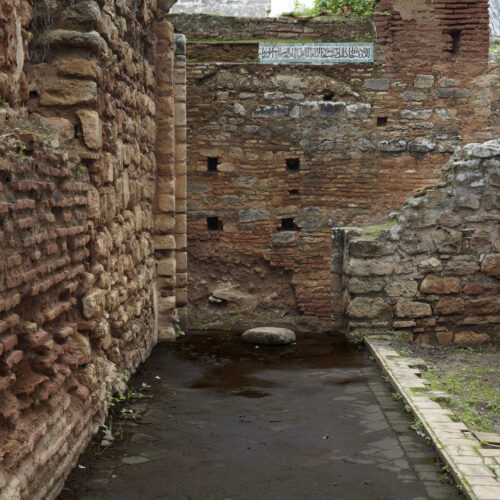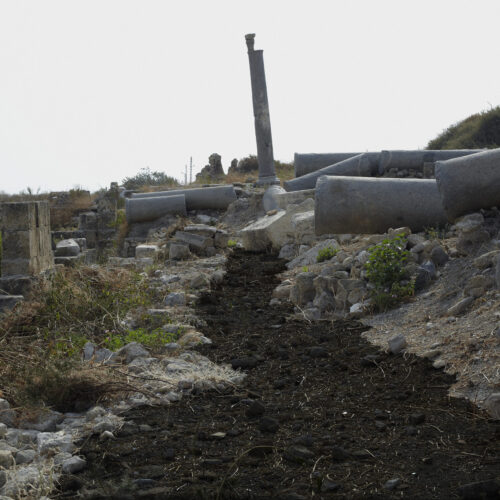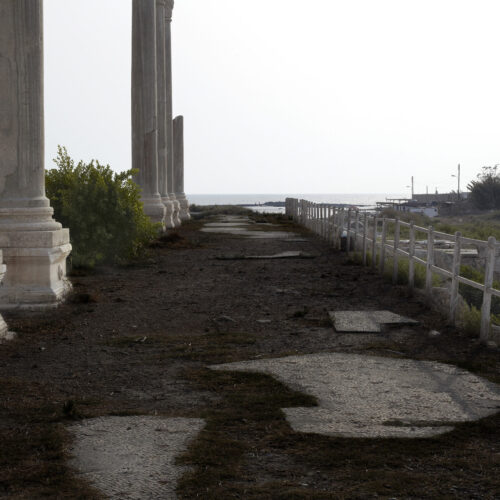RUTAS NEGRAS
Un camino es una lógica: caminos en crisis, aislados, incomprensibles y salvadores también de la autopista total. Caminamos principalmente para sentirnos libres de todos los impedimentos, para dejarnos atrás a nosotros mismos mucho más que para librarnos de los otros.
Rutas Negras es una colección de antiguas metrópolis que surgieron a través de las rutas, de los caminos que unían, a través de los intercambios, de las economías, las civilizaciones. Conocemos las rutas de la seda, de la plata, de las especias, del incienso o las rutas marítimas. Rutas ambientadas en antiguos imperios. En esta serie, nos encontramos con un catálogo de rutas aisladas, restos de cartografías olvidadas en la historia. Estas rutas son como antimapas, caminos vagos y fraccionados, caminos aislados, difusos, desconectados, frente a la hiperconexión total. Nos encontramos al mismo tiempo en la sociedad-red, en la sociedad perfectamente cartografiada, en la sociedad definida (en este caso, caminos hipervinculados, hiperseñalizados), donde abunda la documentación de vías aisladas, calles, caminos, calzadas, carreteras. El sujeto atrozmente reflejado en la red continua y borroso en su discontinuidad es, al final, como uno de estos caminos aislados. Caminos de los que ya no tenemos claves de comprensión cierta, caminos que no guían, caminos parciales que acaban en un bosque o en un páramo o en una ruina y no continúan.
Por otra parte, está todo lo que rodea al camino, como en la Laguna Estigia. En la pintura de Patinir, todo parece claro: paraíso de un lado, infierno, del otro. Ambos lugares, sin embargo, son tan parecidos, tan extraños, tan confusos. El camino define dos lados, ambos son iguales en tanto que extraños. ¿Hasta qué punto son reales los diferentes objetos que se disponen a su alrededor? ¿Hasta qué punto son ilusorios? La mirada de un sujeto difuso de la realidad (ese presente incomprensible por confuso), los restos del paraíso/jardín, después de haberlo abandonado, el código. La cartografía minuciosa, imposible, incapaz de comprender la realidad.
Surgen cosas olvidadas ya tiempo atrás, ruinas hundidas. A cada lado de la ruta surgen ciudades ahora abandonadas pero que en su día fueron puntos cardinales de nuestro mapa historiográfico. Cada punto, uniendo cada ciudad enterrada, crea una ilusión de lo que unió distintas culturas. A través de estas rutas nos hicimos uno y distintos a la vez. La ciudad que no pudimos ver emerge con frecuencia en el interior de la ciudad que vemos.
Algunas de estas metrópolis han evolucionado y se han convertido en ruina. Otras son absorbidas por las de ahora y crean pequeños espacios de ilusión histórica, pequeños paraísos del pasado, rodeados por los ladrillos de la civilización actual. En el centro de todo quedan las antiguas rutas y nuestra mirada que reconstruye un paisaje lleno de significados. En ese momento, cuando miramos los vestigios de lo destruido, codificamos, como lo hacían los románticos, lo sublime: la convergencia de la destrucción natural y la construcción sublime ocular. De ahí los límites de la obra finita frente a la infinitud de la extensión del mundo natural donde subsisten las cosas y por otra, la propia densidad del tiempo, su existencia mas allá de la presencia del hombre.
Cada metrópoli, cada punto unido de nuestro vestigio cultural, crea una ruta oscura, camino en la sombra, ruta negra sobre la que caminamos. De esta manera me implico con el pasado, intervengo el espacio, el camino del que no me deshago. Las rutas que he escogido terminan pintadas con pigmentos naturales o mejor dicho, depositadas, porque tanto el pigmento que dejo por los caminos como los colores que inyectan el papel fotográfico son los que dibujan los vestigios de lo destruido.
BLACK PATHS
A pathway is a logic: paths in crisis, isolated paths, absurd paths – and also paths that save us from the uniformity of global highways. We walk along them mainly to free ourselves from barriers and inconveniences, rather to leave ourselves behind than to escape from others.
Black Paths is a collection of old metropolises that emerged from paths that once connected civilizations through interchange and economic activity. We already know about the Silk Road, the Silver Route, the spice trade routes, the Incense Route and countless maritime routes – all established in ancient empires. In this series, we find a catalogue of isolated pathways, remnants of cartographies now forgotten by history. These paths are like anti-maps. They are vague, fragmented, isolated paths. Diffuse and unconnected, they defy global hyperconnection. At the same time, we live in a web-society, a society that is perfectly mapped out and defined (in this case, via hyperlinked and hypersignalled paths), where documentation about isolated routes, streets, paths, and roads abounds. In a way, the subject, atrociously reflected in a continuous web and blurred in its discontinuity, is like one of those isolated pathways: paths of which we lack any sure understanding, paths that don’t lead anywhere, discontinued paths that end up in a wood, a deserted field or a ruin and don’t go any further.
And then there is everything that surrounds the path, like at the River Styx. In Patinir’s painting, everything seems clear: paradise on one side, hell on the other. Both places, though, are so similar, so strange, so confusing. The path defines two extremes, two opposites, but they are equal in their strangeness. So how real are the different objects that surround them? To what extent are they mere illusions – the gaze of someone looking in on reality from the outside (for whom the present is so confusing that it is incomprehensible), bits and pieces of the garden/paradise that remain once it has been abandoned, certain codes, an impossible, meticulously detailed map unable to decipher reality?
Long-forgotten things, sunken ruins, come to the fore. At both ends of these black paths there were cities that are now abandoned, but that were once cardinal points on our historiographic map. Each point, each connection with a buried city, evokes the links that once existed between different cultures. These paths both made us one and differentiated us, and those cities from the past – those cities we never saw – frequently emerge in the cities we do see today.
Some of them have evolved and become ruins. Others are absorbed by modern metropolises to create historically suggestive little enclaves, little paradises of the past surrounded by the brickwork of present-day civilization. In the middle of all this, we walk the old paths and reconstruct with our gaze a landscape full of meanings. And at that moment, as we contemplate the vestiges of what has been destroyed, we encode the sublime, just as the Romantics did, responding to that natural destruction with an act of sublime visual construction. Hence the limitations of a finite work when confronted with the infinite vastness of the natural world in which things subsist, and the questioning of our ideas of time as we confront events that fold out beyond human presence.
Each of those ancient metropolises, each point on those routes that form part of our cultural heritage, triggers a dark track, a shadowy trail, a black route for us to follow. This is my way of engaging with the past, intervening in space. It is the pathway I cannot abandon. The paths I chose are painted with natural pigments, or it might be better to say sedimented, because both the pigments I leave on them and the colours injected onto the photographic paper signal the remains of something that has been destroyed.

